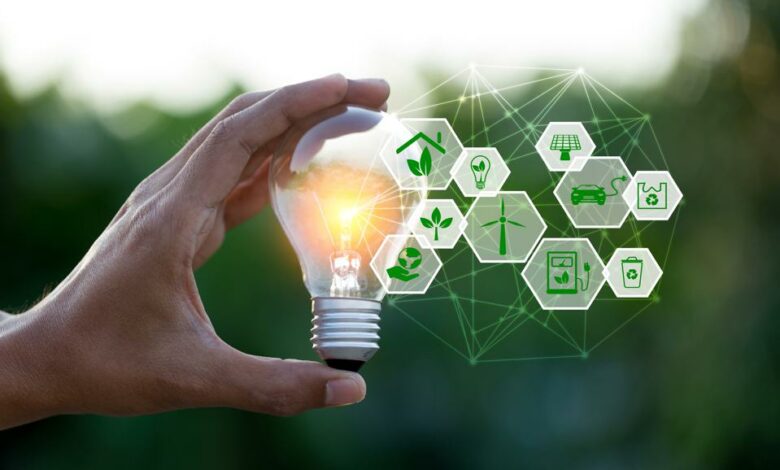How Tech and Innovations are Helping to Restore the Planet

The environment is facing various challenges these days. Challenges and threats include rising temperatures and, as a result, uncontrolled forest fires, destruction of ecosystems due to deforestation, and air pollution. Can technology solve all these problems? Modern technologies offer to get rid of several sources of pollution, reduce the use of fossil resources, and make agriculture more sustainable through advanced agricultural technologies.
Environmental sensors
To heal the planet, we need reliable tools to measure it. Networked sensors today are a device the size of a dime. They control the quality of water and air. In addition, they monitor acidification and detect contaminants. Distributed sensors can help ensure sustainability if the networked sensor environment increases.
Sensors provide real-time data on various changes in the environment and phenomena that determine the social and economic well-being of the population. Localized networks of sensors can also track energy and water use in buildings to reduce waste. The spread of such networks will give us even more opportunities to observe and control changes in the environment, significantly affecting our lives.
Solar glass
Today, renewable sources or clean energy are one of the main ways to help the planet. Technologies for the production and use of solar energy are developing and have already become known worldwide. Some other renewable sources and materials will be used in the future.
Why is all this necessary? Only environmental technologies can stop climate change and even reverse it. The need for the search and development of alternative energy sources
also caused by the inability to renew fossil fuels. New methods are more environmentally friendly. The production and distribution of green and clean energy involve intelligent grids.
Electric cars
The growing popularity of electric vehicles can significantly contribute to helping the environment. This technology is not new, but electric cars on the road can be seen more often. Moreover, hybrid vehicles are also gaining popularity.
Several factors impact this growth, including a reduction in the price of such cars and improvements in technology. Thus, electric vehicles and hybrids are more affordable and more reliable. However, they cannot be called a completely green solution since production still requires toxic metals.
Plant-based plastic
The use of single-use plastic must end. In many countries around the world, including the United States, some initiatives prohibit or significantly restrict the sale and use of plastic bags and other things made from this material. For example, plastic straws in LA are only available upon request. However, plastic waste is still meaningful, as this material is deeply ingrained in consumers and the economy.
One of the most effective solutions to the problem of using plastic is to create an alternative material with similar properties but different compositions. Such an alternative is plant-based biodegradable plastic. For example, Avani Eco from Indonesia has been producing bioplastic from cassava since 2014. The sector is growing rapidly, but not all bioplastics are produced and decomposed environmentally friendly. To be responsible consumers, we need to pay attention to the entire life cycle of the products we buy.
Fake meat
Meat production is costly to our planet. It is a land-use issue, as pastures are needed to raise livestock. More than 15,000 scientists in 2017 signed the Warning to Humanity, which contains, among other things, a call to reduce meat consumption per capita.
The creation of pastures and beef production is one of the leading causes of deforestation in Central and South America. It, in turn, leads to massive carbon emissions. The good news is that fake meat has already been invented. Beyond Meat and Impossible Foods have created alternatives to real meat that could be successful substitutes.
Smart grids
The energy infrastructure is outdated and problematic. Electricity generation is centralized, and electricity is still distributed to the user. However, this system has one serious problem – the network through which electricity is distributed is sensitive to fluctuations in usage and output. For the reliable operation of these networks, overproduction of energy is necessary. In addition, modern infrastructures still rely on energy sources that emit pollutants.
Smart grids involve deploying considerable energy, distribution, network, sensor, and automation technologies. Thus, a new system for the 21st century will be developed. Smart grids make it possible to produce electricity locally, and even individual households can use them. Energy can then be returned to the grid upstream. Sensors will also help create more robust and accurate prediction models for production tuning and avoidance. Batteries are capable of storing energy from renewable sources. The smarter the appliances, the more savings we can save. The concept goes beyond the light socket. In addition, Smart Grid technologies can help reduce carbon emissions by 58% in the future.
Eco-friendly batteries
Energy is holding back many green technologies. Alternatives such as wind and solar power come to mind, but they have one serious drawback: both the sun and the wind may be absent. Batteries are pretty expensive. The Clean Air Task Force reports that California will need $360 billion in energy storage systems to meet its ambitious goals of providing energy exclusively from renewable sources. However, other solutions are being developed, such as sulfur flow batteries, which are cheaper than lithium batteries and will store energy for longer.
Final thoughts
As you can see, modern technologies can offer much more sustainable and even more economical solutions for different areas of life. We can move more confidently towards a sustainable future with accurate and reliable solutions.




